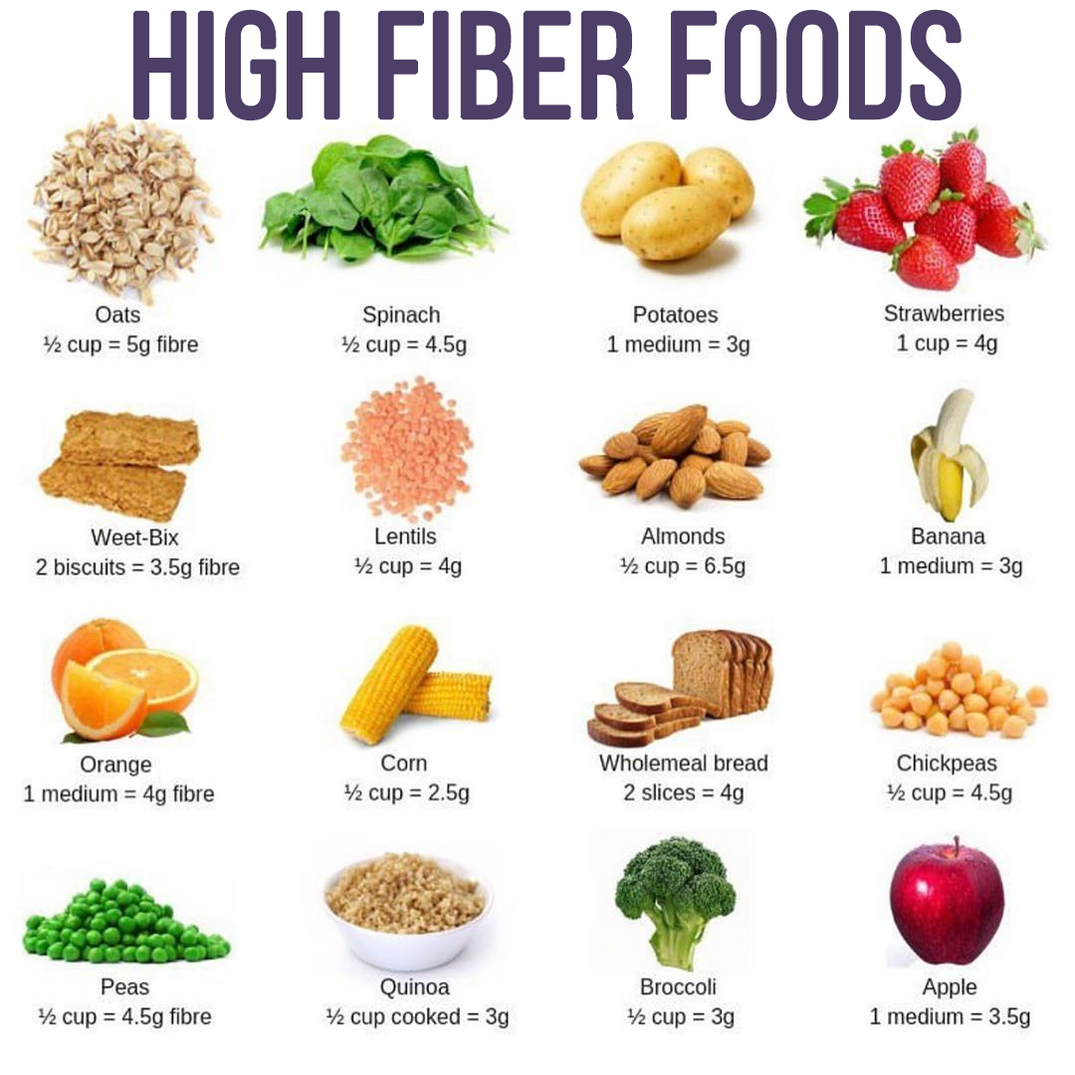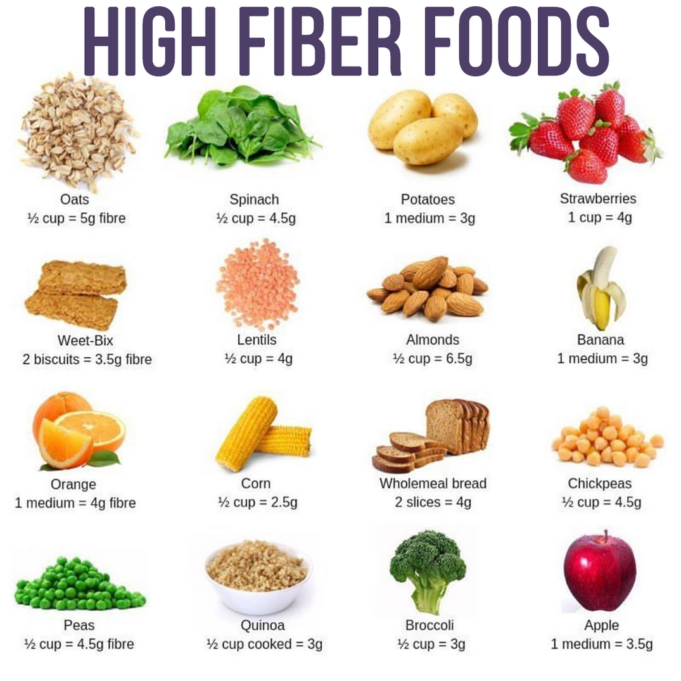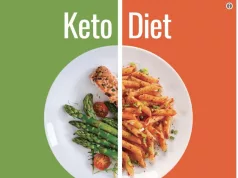How to add fiber to diet – How to add fiber to your diet? It’s a question that’s been bouncing around the internet for years, but the truth is, it’s a simple answer with some surprising twists. Imagine a world where your digestive system sings with joy, your weight stays steady, and your blood sugar does a happy dance.
This is the world of fiber, and it’s waiting for you to join the party!
Fiber, that magical ingredient found in fruits, vegetables, and whole grains, is like a superhero for your gut. It helps keep things moving smoothly, absorbs excess cholesterol, and even helps you feel fuller for longer. But adding fiber to your diet doesn’t have to be a chore.
We’ll guide you through the ins and outs, revealing the secrets to incorporating fiber into your everyday life without sacrificing taste or enjoyment.
Understanding Fiber and its Importance
Fiber is a type of carbohydrate that our bodies can’t digest. It’s found in plant-based foods and plays a crucial role in maintaining our overall health. While we can’t break it down, fiber is essential for our digestive system, and it’s a key component of a healthy diet.
Types of Fiber and their Sources
Fiber is broadly categorized into two main types: soluble and insoluble fiber.
- Soluble fiber dissolves in water, forming a gel-like substance. It’s found in foods like oats, beans, lentils, apples, and citrus fruits.
- Insoluble fiber does not dissolve in water. It adds bulk to our stool and helps move food through the digestive tract. It’s found in foods like whole grains, vegetables, and nuts.
Benefits of Fiber
Fiber offers a wide range of health benefits. Here’s a breakdown of how it contributes to our well-being:
- Digestive Health:Fiber acts like a broom in our digestive system, sweeping away waste products and preventing constipation. It also helps maintain a healthy balance of bacteria in our gut, which is crucial for optimal digestion and immune function.
- Weight Management:Fiber helps us feel full and satisfied, which can aid in weight management. It slows down the absorption of sugar and can help regulate blood sugar levels.
- Blood Sugar Control:Soluble fiber can help regulate blood sugar levels by slowing down the absorption of glucose. This is particularly beneficial for people with diabetes or those at risk of developing the condition.
Comparing Soluble and Insoluble Fiber
| Characteristic | Soluble Fiber | Insoluble Fiber |
|---|---|---|
| Dissolves in Water | Yes | No |
| Forms a Gel | Yes | No |
| Sources | Oats, beans, lentils, apples, citrus fruits | Whole grains, vegetables, nuts |
| Benefits | Lowers cholesterol, regulates blood sugar, promotes gut health | Adds bulk to stool, prevents constipation, promotes regularity |
Recommended Daily Fiber Intake: How To Add Fiber To Diet
You’ve learned about the benefits of fiber, but how much do you actually need? Let’s dive into the recommended daily fiber intake for different age groups and factors that influence your individual needs.
Recommended Daily Fiber Intake for Different Age Groups
The recommended daily fiber intake varies depending on age and gender. The Dietary Guidelines for Americans recommend the following daily fiber intake:
- Ages 1-3 years:19 grams
- Ages 4-8 years:25 grams
- Ages 9-13 years:31 grams
- Ages 14-18 years:38 grams for boys, 26 grams for girls
- Ages 19-50 years:38 grams for men, 25 grams for women
- Ages 51 and older:30 grams for men, 21 grams for women
Calculating Individual Fiber Needs
The recommended daily fiber intake is just a guideline. Your individual fiber needs may vary based on factors like age, gender, activity level, and overall health. Here’s how to calculate your individual fiber needs:
Fiber intake (grams) = Age (years) x 0.05
For example, a 30-year-old woman would need approximately 1.5 grams of fiber per year of age, or 30 x 0.05 = 15 grams of fiber per day.
Visual Representation of Recommended Fiber Intake
The following table provides a visual representation of the recommended daily fiber intake for different age groups:
| Age Group | Recommended Daily Fiber Intake (grams) |
|---|---|
| 1-3 years | 19 |
| 4-8 years | 25 |
| 9-13 years | 31 |
| 14-18 years (Boys) | 38 |
| 14-18 years (Girls) | 26 |
| 19-50 years (Men) | 38 |
| 19-50 years (Women) | 25 |
| 51+ years (Men) | 30 |
| 51+ years (Women) | 21 |
Incorporating Fiber into Your Diet

Now that you understand the importance of fiber and how much you need, let’s talk about how to actually get it into your diet. Don’t worry, it’s not as daunting as it might seem. With a few simple swaps and additions, you can easily boost your fiber intake and reap the benefits.
High-Fiber Foods by Food Group
Fiber is found in a wide variety of foods, making it easy to incorporate into your daily meals and snacks. Here’s a breakdown of high-fiber foods by food group:
- Fruits:Apples, pears, bananas, berries, raspberries, blackberries, oranges, grapefruit, avocado, figs, dates, prunes
- Vegetables:Broccoli, Brussels sprouts, carrots, spinach, kale, asparagus, peas, sweet potatoes, green beans, artichokes, onions, garlic, bell peppers
- Grains:Whole wheat bread, brown rice, quinoa, oatmeal, barley, popcorn
- Legumes:Beans (kidney, black, pinto, chickpeas), lentils, peas
- Nuts and Seeds:Almonds, walnuts, chia seeds, flax seeds, sunflower seeds, pumpkin seeds
Sample Meal Plan
Here’s a sample meal plan that incorporates a variety of fiber-rich foods throughout the day: Breakfast:Oatmeal with berries and chia seeds (25 grams of fiber) Lunch:Salad with grilled chicken, quinoa, and chickpeas (20 grams of fiber) Dinner:Lentil soup with whole wheat bread (15 grams of fiber) Snack:Apple with almond butter (5 grams of fiber)
Feeling sluggish and constipated? Maybe your diet needs a little more roughage! Adding fiber can be as simple as swapping out white bread for whole grain, or adding a handful of berries to your breakfast. And hey, if you’re looking for more structured guidance, there are tons of different diet types out there, some even specifically designed to increase fiber intake.
Whatever your approach, remember: a little fiber goes a long way in keeping things moving smoothly.
High-Fiber Recipes, How to add fiber to diet
Here are a few high-fiber recipes that you can easily add to your meal plan:
| Recipe | Fiber Content (grams) | Cooking Time |
|---|---|---|
| Black Bean Burgers | 10 | 30 minutes |
| Quinoa Salad with Roasted Vegetables | 12 | 45 minutes |
| Overnight Oats with Chia Seeds and Berries | 15 | 5 minutes prep, overnight soaking |
| Lentil Curry | 18 | 45 minutes |
Tips for Increasing Fiber Gradually
Adding fiber to your diet is a great way to improve your health, but going too fast can lead to some uncomfortable side effects. Think of it like training for a marathon – you wouldn’t run a full 26.2 miles on your first try! You need to gradually increase your distance, and the same goes for fiber.
Want to feel like a superhero with a digestive system of steel? Adding fiber to your diet is the key, and a clean diet can be your secret weapon! Think of it as building a sturdy fortress for your gut, where those pesky digestive troubles can’t get in.
So grab a handful of berries, a big salad, or some whole grains and get ready to unleash your inner fiber-powered warrior!
Strategies for Gradual Fiber Increase
It’s important to increase your fiber intake gradually to give your digestive system time to adjust. Here are some strategies:
- Start Small:Don’t try to overhaul your diet overnight. Add a few extra grams of fiber per day, and gradually increase it over time. Aim to increase your fiber intake by 5 grams per day every few days.
- Choose Whole Grains:Swap refined grains like white bread and white rice for whole grains like brown rice, quinoa, and whole-wheat bread.
- Add Fruits and Vegetables:Incorporate a variety of fruits and vegetables into your diet. Aim for at least five servings a day.
- Choose High-Fiber Snacks:Opt for snacks like fruits, vegetables, nuts, and seeds.
- Listen to Your Body:If you experience any digestive discomfort, slow down the pace of your fiber increase.
The Importance of Staying Hydrated
Water is your best friend when it comes to fiber. Fiber absorbs water in your digestive system, which helps to soften stools and prevent constipation. Think of fiber like a sponge. When you add more fiber to your diet, you need to increase your water intake to help it work its magic.
- Drink Plenty of Water:Aim for at least 8 glasses of water per day.
- Include Other Fluids:Don’t forget about other fluids like herbal teas, soups, and fruits and vegetables that are high in water content.
- Avoid Dehydrating Beverages:Limit your intake of sugary drinks and alcohol, which can dehydrate you.
Practical Tips for Incorporating Fiber into Meals and Snacks
Here are some easy ways to add fiber to your daily routine:
- Add a Scoop of Bran:Sprinkle a tablespoon or two of bran flakes on your cereal, yogurt, or oatmeal.
- Make Smoothies with Fiber:Blend in fruits, vegetables, and chia seeds for a fiber-packed breakfast or snack.
- Swap Out White Rice for Brown Rice:Brown rice is a great source of fiber and a delicious alternative to white rice.
- Add Legumes to Your Meals:Lentils, beans, and chickpeas are excellent sources of fiber and protein.
- Use Whole-Wheat Pasta:Whole-wheat pasta is a more nutritious option than refined pasta.
- Add Chia Seeds to Your Yogurt:Chia seeds are a great source of fiber and omega-3 fatty acids.
- Make a Salad with Lots of Vegetables:Add spinach, kale, carrots, cucumbers, and other leafy greens to your salads.
Potential Side Effects and Considerations
While fiber is essential for good health, consuming too much can lead to some uncomfortable side effects. It’s important to understand these potential issues and adjust your fiber intake accordingly.
Adding fiber to your diet is like giving your digestive system a spa day – it keeps things moving smoothly! But if you’re on a keto diet, you might be wondering how to get your fiber fix. The keto diet, which focuses on high fat and low carbs, how does keto diet work by putting your body into a state of ketosis, where it burns fat for energy instead of carbs.
So, how do you get your fiber on keto? Think leafy greens, avocado, and even some berries – they’re your fiber-filled friends!
Potential Side Effects of High Fiber Intake
Consuming a large amount of fiber quickly can lead to digestive discomfort. The most common side effects include:
- Gas and Bloating:Fiber is fermented by bacteria in your gut, which can produce gas. This can lead to bloating and flatulence, especially when you first start increasing your fiber intake.
- Constipation:Ironically, too much fiber can actually worsen constipation. If you don’t drink enough fluids, fiber can absorb water in your intestines, making stools harder and more difficult to pass.
- Diarrhea:In some cases, too much fiber can cause diarrhea, especially if you consume a lot of soluble fiber, which attracts water into your intestines.
Individuals Who May Need to Limit Fiber Intake
Certain individuals may need to limit their fiber intake, especially if they have specific digestive conditions:
- Irritable Bowel Syndrome (IBS):Some people with IBS find that high-fiber diets can worsen their symptoms. It’s important to work with a doctor or registered dietitian to determine the appropriate fiber intake for your specific needs.
- Diverticulitis:This condition involves inflammation or infection of small pouches in the colon. During a flare-up, it’s recommended to reduce fiber intake and follow a low-residue diet.
- Recent Surgery:After abdominal surgery, your digestive system may need time to heal. Your doctor may recommend a low-fiber diet to minimize strain on the digestive tract.
Addressing Potential Side Effects
If you experience any side effects from increasing your fiber intake, there are a few things you can do:
- Increase Fiber Gradually:Don’t try to increase your fiber intake too quickly. Start with small amounts and gradually increase over several weeks.
- Drink Plenty of Fluids:Fiber absorbs water, so it’s crucial to drink plenty of fluids, especially water, to help it move through your digestive system.
- Choose Soluble Fiber:Soluble fiber dissolves in water and can help to regulate bowel movements. Good sources include oats, beans, lentils, and fruits like apples and bananas.
- Listen to Your Body:If you experience any discomfort, reduce your fiber intake and gradually increase it again once you feel better.
Concluding Remarks
So, there you have it – a fiber-filled journey to a healthier you. Remember, it’s all about gradual changes and finding what works best for your body. Don’t be afraid to experiment with different high-fiber foods, and remember to drink plenty of water.
With a little effort, you can unlock the power of fiber and experience a world of digestive bliss. Now, go forth and fiber up!
FAQ
What if I experience side effects like gas or bloating?
Don’t worry, these are common side effects, especially when you first start increasing your fiber intake. The key is to start slowly and gradually increase your fiber intake over time. Make sure to drink plenty of water, and if the side effects are bothersome, you can always reduce your fiber intake temporarily.
Can I get too much fiber?
While fiber is generally good for you, consuming too much can lead to digestive discomfort. If you experience severe bloating, gas, or constipation, it’s best to consult with a doctor or registered dietitian to determine the right amount of fiber for you.
What are some good sources of fiber for picky eaters?
For picky eaters, focus on incorporating fiber-rich foods they already enjoy. Try adding berries to yogurt or cereal, sneaking spinach into smoothies, or using whole-wheat bread for sandwiches. Even small changes can make a big difference!
























